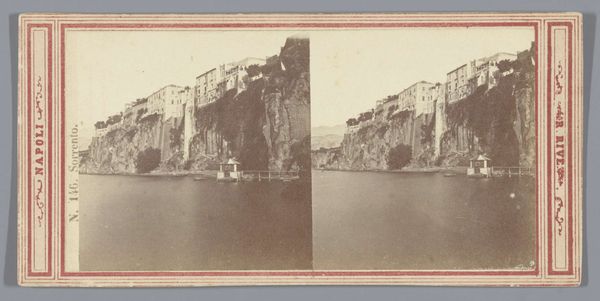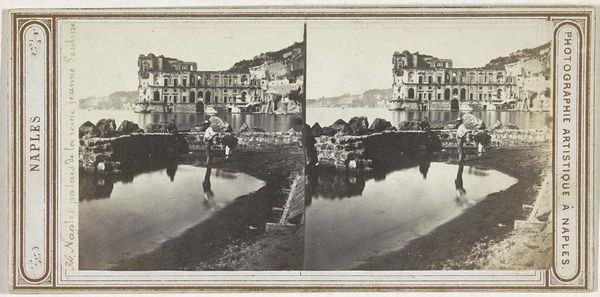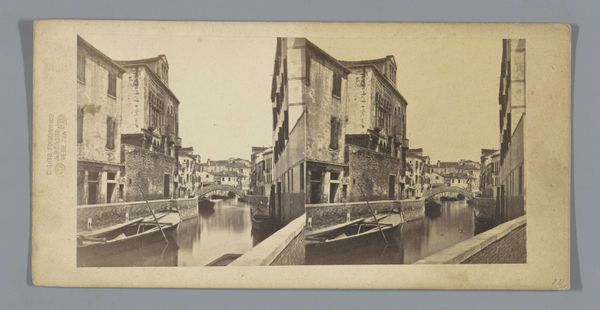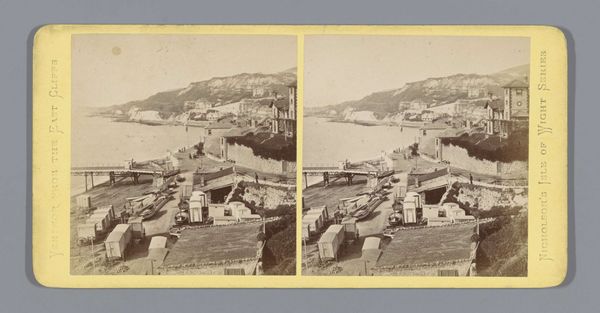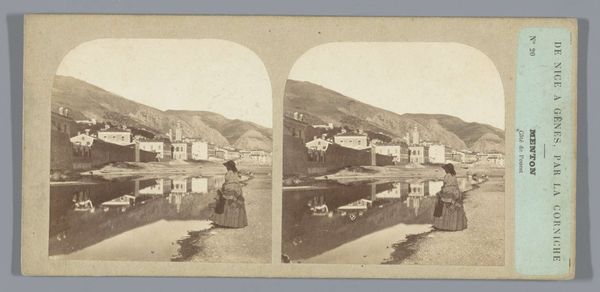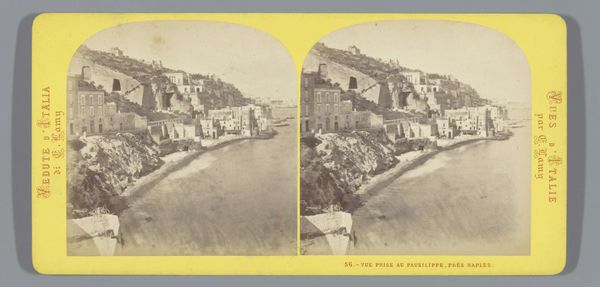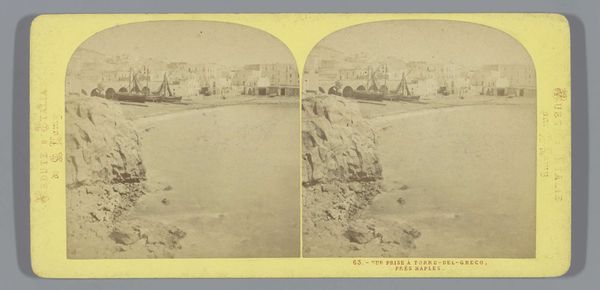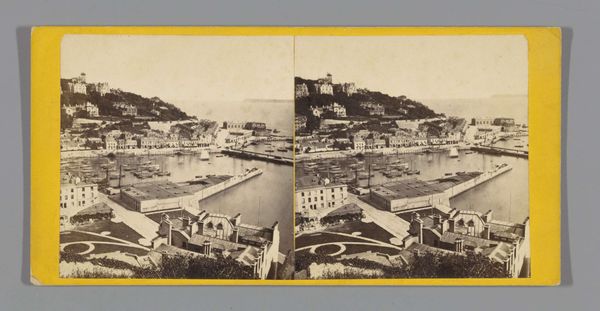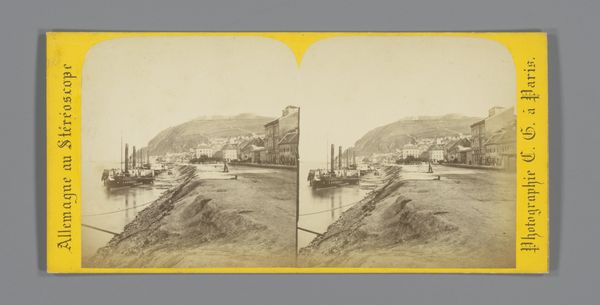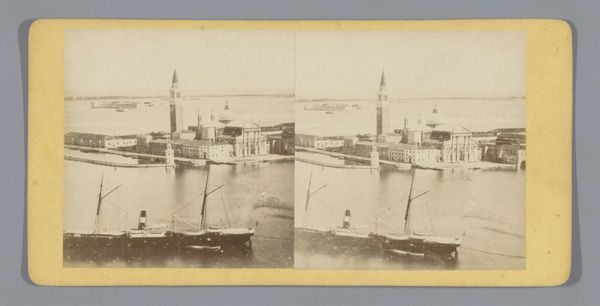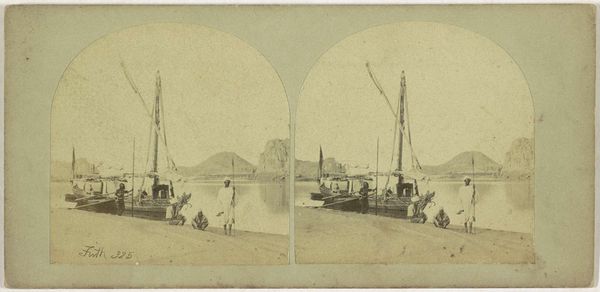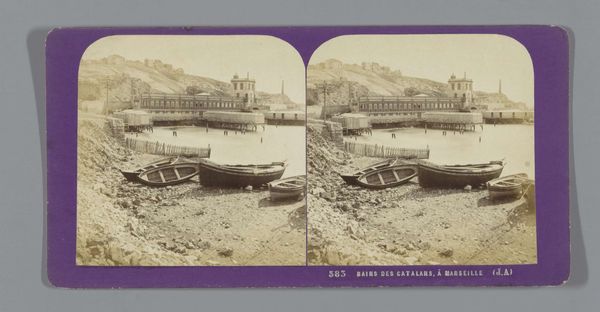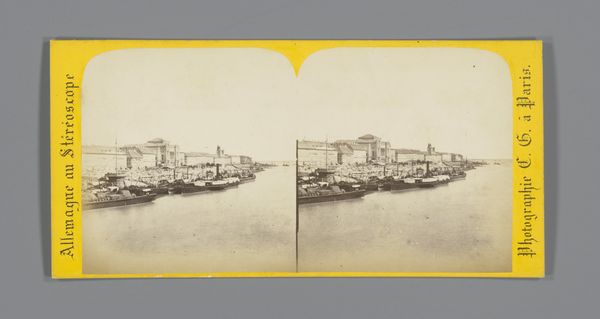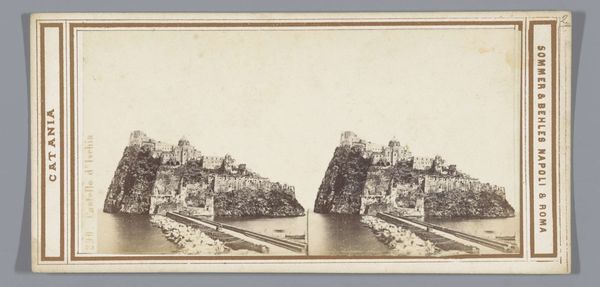
Dimensions: height 83 mm, width 174 mm
Copyright: Rijks Museum: Open Domain
Curator: Before us, we have Giorgio Sommer's "View of the Via Posillipo in Naples," an albumen print, likely taken between 1860 and 1880. Quite charming, wouldn't you say? Editor: It feels...distant. In a melancholic, faded-postcard kind of way. All the pale grays and the somewhat stiff composition – it speaks to a longing, maybe for a place or time just out of reach. The romantic era is so prominent in this image. Curator: Absolutely. Now, Sommer, operating in Italy during this period, capitalized on the burgeoning tourist trade. These albumen prints, mass-produced, became the postcards of their day, capturing romanticized views. He must have been one savvy individual, catering for popular demand using such an interesting process. Editor: It’s intriguing how the actual process impacts the reception. Albumen prints meant coating paper with egg whites, right? To hold the light-sensitive chemicals... It speaks of labor, almost domestic in nature, yet fueling the creation of this very "grand" landscape. It also must have been laborious producing the print after the photograph was taken! Curator: Precisely! There is also the fact that it flattens the landscape slightly and adds to this ethereal view that we are seeing today. It's not just a record, it’s a crafted ideal. And those little details – the horse-drawn carts, the figures along the water’s edge, all carefully positioned, create this picturesque, almost stage-managed view of Neapolitan life. Editor: Stage-managed is key. The consumption is baked into the making! This vista is less about lived experience and more about crafting a desirable image that tourists can buy into, a physical piece of a fleeting, perhaps fabricated, paradise. Was he not using multiple negatives in an effort to further duplicate these views of paradise, mass producing them at the turn of a century? Curator: Quite right, these photos and stereoscopic views of Naples were becoming a staple. While they look innocent, Sommer certainly knew what he was doing with his marketing techniques. Editor: It also raises questions around authenticity and how we understand ‘place’ through reproductive technologies like photography. What we are looking at today does, after all, hold traces of egg and silver. Curator: In that regard, "View of the Via Posillipo" asks us to reconsider the act of seeing, transporting us with the beautiful technology of the time. A sublime combination of human ambition, photographic processes, and that eternal longing for elsewhere. Editor: And as the product itself transforms with age, so does its meaning. Looking closely unveils just how much is revealed in the details.
Comments
No comments
Be the first to comment and join the conversation on the ultimate creative platform.
